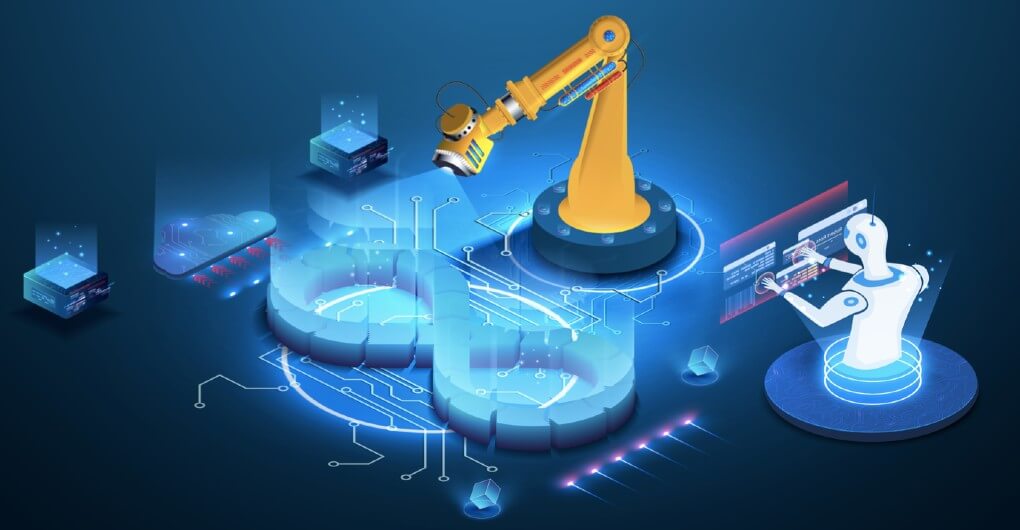The AIOps Market was worth USD 13.51 billion in 2020 and will touch USD 40.91 billion by 2026, with a CAGR of ~21.05%. Traditional IT cannot cope with the sheer volume, velocity, and variety of data in today’s digital age. To cope, smart businesses upgrade from traditional ITOps to automated AIOps.
AIOps marks a shift from a centralized IT model to applications, containers, and other cutting-edge technology. It makes using APIs, IoT sensors, and other key elements of emerging technology seamless. Top AIOps platforms fend off disruptions automatically and enable innovation.
But deploying AIOps is not easy. Here are five steps to transition from traditional ITOps to automated AIOps
1. Eradicate Data Silos
Successful implementation of AIOps rests on Big Data and Machine Learning. Data silos stand in the way.
The success of AIOps depends on the platform collecting data from the countless tools, devices, and other things connected to the network. But most enterprises grow organically and end up with disparate systems and applications. Ad-hoc measures and shadow IT becomes entrenched, creating silos.
When the AIOps platform grapples with poor or incomplete data, the output suffers. Making business decisions based on flawed data sets becomes counterproductive.
To improve the quality of data, and ensure the AIOps platform access complete, up-to-date data:
- Centralize information. Aggregate enterprise data in a centralized and accessible repository.
- Replace siloed architectures with integrated systems, preferably cloud-based. The cloud holds data in a central depository, making access straightforward.
- Use APIs to connect to data sources not viable for integration into a central depository. API connectors establish data pipelines that enable seamless data to flow among disparate systems.
- Maintain data integrity while collecting multiple data sets from the technology ecosystem. Make sure there is no accidental deletion.
- Cleanse collected before feeding it to the analytics engine, to ensure quality.
Data from job logs and monitoring systems, engagement data, ticket recordings, and more, offers rich insights. Analysis of such data enables spotting and reacting to issues in real-time.
2. Upgrade the Technology
AIOps transforms raw data into actionable insights. The platform delivers a comprehensive analytics-based strategy. But doing so requires an upgrade to the underlying technology.
- Provision for instant IT infrastructure, with no downtime. AIOps requires keeping pace with continuous code deployment. Trying to do this with a typical enterprise cloud environment can get complicated.
- Deploy hyper-automation to streamline and enhance complex IT processes. Most enterprises focus on automating routine and repetitive tasks. But today’s business environment has become very complex. Focusing only on the routine might not yield tangible returns.
- Set up autonomous systems that fulfill business objectives. AIOps goes beyond traditional automation. Consider a project to set up an automated check-out system in grocery stores. The tech would include a combination of mechanics, sensors, and algorithms. In traditional IT Ops, only software and hardware come into the mix.
- Upgrade the enterprise IT stack for end-to-end data access of connected IT systems.
Begin with an end in mind and engage in the task methodologically. Transitioning to AIOps is costly and resource-intensive. It is important to prioritize resources for maximum business benefit. Automating a few processes here and another few purposes there fritters away the investment with very little benefit.
3. Reconfigure Workflows
AIOps, like all digital transformation projects, entail change. It involves reconfiguring traditional processes to infuse automation wherever applicable. The new technology will render some of the existing workflows and processes inadequate or obsolete.
- Set up alert attributes to improve the health of servers and systems. Configure the system for proactive alerts that preempt damages instead of having to resolve issues.
- Create a cluster of symptoms that enable quick identification of problems and solutions.
- Provide a unified platform that increases the speed and efficiency of incident resolution.
- Bottlenecks often arise during implementation. Conduct swift root-cause analysis and remediation to resolve such bottlenecks.
- Do not ignore the human element. AIOps is picking up pace. But it is not yet fully autonomous. Human expertise plays a crucial role in maximizing the return on investment of AIOps.
Deployment of AIOps is complex, as the footprint of change spans every aspect of IT operation.

4. Reskill and Retool the Workforce
Many enterprises underestimate the quantum of change and struggle with the implementation. To get implementation right, reskill and retool the workforce.
- Focus on skills availability. Identify the skills gap and resolve it. For example, most enterprises have very little coding capabilities in-house. Offer training to enhance the coding capabilities. Alternatively, explore external options such as outsourcing.
- Align people and business goals. Strive for a shared vision among the workforce. Jumping into a technology bandwagon blindly rarely delivers the expected results. Make explicit how new skills help in business objectives. For instance, consider the objective of providing a seamless ordering system for customers. Retraining sales reps to handle customer service and technical troubleshooting serve the purpose.
- Tweak training. Institute training and development as a continuous process. Review training effectiveness periodically, and make the necessary tweaks.
- Develop a talent pipeline. New tech has a very high employee turnover ratio, regardless of the interventions offered by the enterprise.
Successful companies approach AIOps as a continuous integration and deployment cycle. Approaching it as a one-off project rarely works. They mobilize resources for the long term, with maximum flexibility and scalability.
5. Focus on the Culture
The success of AIOps rests on a collaborative culture.
The successful implementation of AIOps depends on a culture of transparency, openness, and free sharing of information.
- Establish robust data pipelines to ensure the free flow of information.
- Set up seamless collaboration systems to connect multiple teams in real-time.
- Manage resistance to change. People and political challenges are inevitable when attempting large-scale disruption such as AIOps. Inculcate among the rank and file the mentality to embrace change.
- Ensure top management buy-in. Make explicit what is in it for them. Articulate the benefits in quantitative terms, such as “x” direct returns and “z” indirect benefits for “y” investments.
AIOps future-proofs the enterprise. Done right, it detects anomalies and performance deviations in real-time. The enterprise may resolve application challenges and user concerns in double-quick time. But there is no magic bullet or shortcut. Follow the above steps and rope in experts to get value out of the investment.












